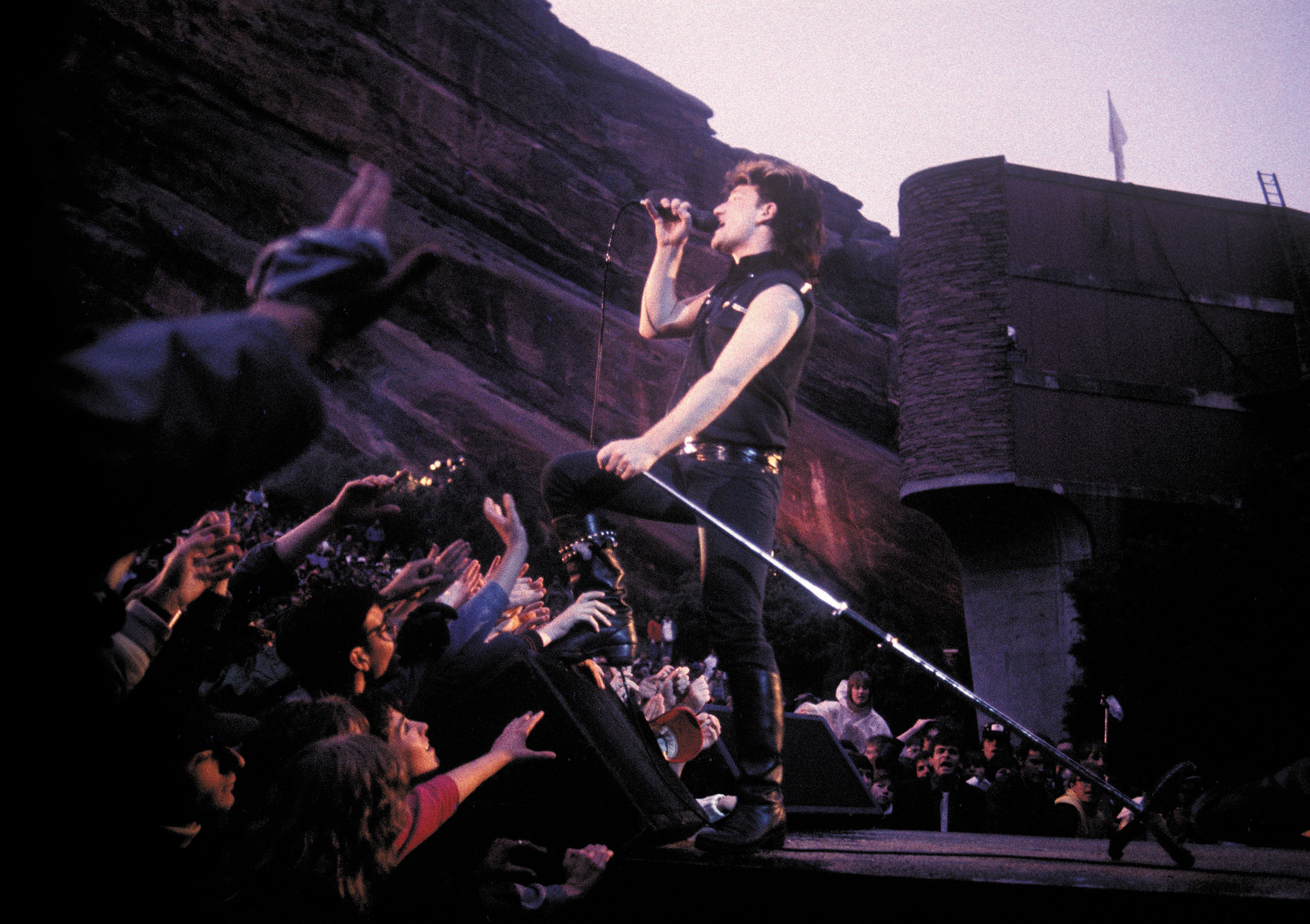Bono — artist, activist and the lead singer of Irish rock band U2 — will be out Tuesday with a memoir, "Surrender: 40 Songs, One Story." By arrangement with Bono's team, Axios brings you this exclusive sneak peek.
- Each of the 40 chapters is named after a U2 song. Bono, 62, did the illustrations.
Chapter 12, "Sunday Bloody Sunday," goes into detail on Larry Mullen and his drums’ impact and importance, musically and personally. From there, Bono goes into the process that brought "Sunday Bloody Sunday" about, tying it back to Steve Lillywhite’s contributions and how they brought out the best in Larry and the drums he played on.
[Listen to the audiobook chapter here.]
By Bono
I can’t believe the news today
I can’t close my eyes and make it go away
How long, how long must we sing this song?
All musical instruments are useful for love and exhortation.
- Only one is essential for war. The drums. The drums are thin skin stretched tightly over hollow volumes, mostly of wood, which gives them their earthiness, their sexiness. Slapping without the tickling.
- The hand or the stick bounces across the skin of the drums, throwing the listener forward into a dance, into a physical response.
- For war, and in particular marching to war, wood was replaced by metal. The snare, as it’s known for good reason, supplies body armor to the already athletic muscular choices available. There is a particular violence built into the snare drum, and the rat-a-tat of a military tattoo was exactly what we were looking for with the opening of “Sunday Bloody Sunday.” I don’t ever want to be at war with Larry Mullen, but I don’t ever want to go to war without him.
From a very junior age, Larry Mullen has explained his craft and art like this: “I hit things for a living.”
- And he does. He can hit people, too, not physically, but psychically. Most people who enter a room with Larry Mullen find him striking, in the sense that he is a stylish, good-looking member of the species but also in the sense that he can be suspicious of why you are in his gaze. Of your intentions, your being in the room, and, perhaps on a bad day, your reason for being anywhere at all.
- Drummers are born, not made.

"Could You Try That Again?"
From behind the wide-screen futurism that was the glass of Windmill Lane Recording Studios, Steve Lillywhite is producing our third album, War, with the patience you have to have to be a world class record producer at just twenty-seven.
- Two years after our first album, we are not musical sophisticates. We have talent, but playing in tune and in time in the antiseptic environs of a modern recording studio is not a walk in the park for any of us.
- Scrutiny creates self-consciousness, and musical parts that were arrived at intuitively can change in subtle ways that make them less rhythmic or less locked in with the other musicians. This in turn leads to awkward moments in the control room, where words like “tightness” and “looseness” substitute for “this sounds boring” and “I never really liked this one.”
It’s particularly hard for the bass and drums — the foundation of any recording — and today they are under a microscope with a system of sensitive microphones that wrap their spider legs around amp and kit from every direction.
- This is not an environment conducive to art. The room feels more like an operating theater than a stage, surgeons conferring on how best to fix the limp in question. Corrective surgery or amputation? The patient lies under the gaze and glare of the production team, Steve Lillywhite and his engineer, Paul Thomas. There is a lot of stopping and starting. Steve’s matter-of-fact tones now a tinny voice coming through our “cans.”
- “Could you try that again?” is common usage for “That wasn’t good enough.” Is Larry Mullen cracking under the pressure? Not quite. He can just about take Steve Lillywhite’s implicit criticism because Steve is famous for his dominant drum sounds. And because Larry knows this is a great song.
All of us seem to know. Steve has told us a great song can be played on an acoustic guitar with a tabletop as drums. And there was a certain completeness in the earliest, rawest expression of this song that we’d played around the kitchen table in our rehearsal room out on the beach at Sutton, where Ali and I lived. The street where Larry would make his home years later.
- Steve taught us to test our material by kind of campfiring it to figure out if we had a good enough chorus or hook. Songs, said Steve, were all about the hook.
In a Bob Dylan song the hook can be a phrase, one you thought had always existed, for example “the times they are a-changin’.” Nothing much in that—everybody knew the times were changing—but the emphasis, “the times they are a-changin’,” and the tone of voice create an undertow of jeopardy.
- The hook might be just a guitar line. Everyone who’s ever walked into a guitar shop knows the riff from Deep Purple’s “Smoke on the Water.”
- “No one listens to the lyrics.” Edge, who is a fine lyricist, likes to wind me up. With “Sunday Bloody Sunday,” the drums were the hook.
Excerpted from SURRENDER by Bono, narrated by the author. Copyright © 2022 by Bono; production copyright ℗ 2022 Penguin Random House, LLC. Excerpted by permission of Alfred A. Knopf and Penguin Random House Audio, divisions of Penguin Random House LLC. All rights reserved. No part of this excerpt may be reproduced or reprinted without permission in writing from the publisher.
Go deeper: More on the book ... Video: Bon talks to Norah O'Donnell on "CBS Sunday Morning."







